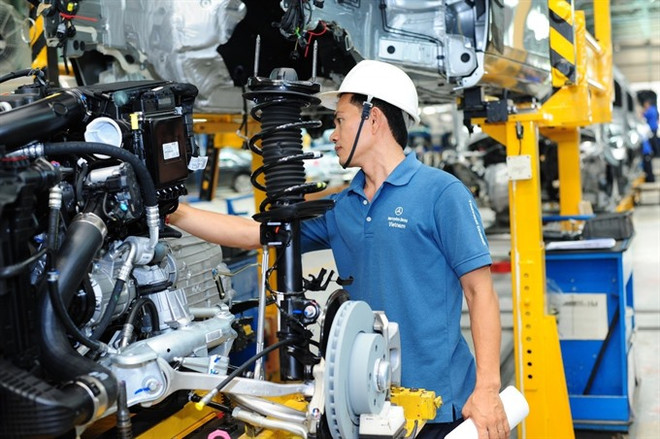 Vietnam Manufacturing Purchasing Managers’ Index (PMI) rose to 52.5 in June from a 14-month low of 51.6 in May (Photo: doanhnghiepvn.vn)
Vietnam Manufacturing Purchasing Managers’ Index (PMI) rose to 52.5 in June from a 14-month low of 51.6 in May (Photo: doanhnghiepvn.vn)Hanoi (VNA) - The Vietnam Manufacturing Purchasing Managers’ Index (PMI) rose to 52.5in June from a 14-month low of 51.6 in May, the latest survey fromNikkei’s IHS Markit showed on July 3.
A reading above 50 indicates economic expansion, while a reading below 50points towards contraction.
"The pickup in growth in the Vietnamese manufacturing sector in Juneallays some of the concerns that were raised by the marked slowdown seen inMay, with a solid rise in new business particularly encouraging," AndrewHarker at IHS Markit said.
“Although slightly down from the first quarter of the year, the average PMIreading over Q2 points to a further solid expansion of Vietnamese manufacturingoutput. IHS Markit forecast a rise of 6.2 percent in Vietnamese GDP this year,with this data suggesting that the manufacturing sector continues to make apositive contribution.”
According to the survey, the latest reading signalled a solid improvement inthe health of the sector and one that was above the average since the surveybegan in March 2011.
After having slowedsignificantly in May, the rate of growth in new orders accelerated in June. Thelatest increase in new business was solid and linked by panellists tostrengthening market demand. New export orders also rose at a faster pace inJune.
The expansion in total new business reflected growth in the consumer andintermediate goods sectors, with the pace of increase particularly strong inthe former. Meanwhile, investment goods firms saw new orders decline.
New order growth, allied with strengthening client demand, resulted in aneighth successive monthly increase in output. The rate of expansion ticked upfrom that seen in May.
The rate of job creation also accelerated in June, with manufacturers in Vietnamresponding to higher new orders and production requirements. This addedoperating capacity facilitated the reduction of the work backlog at somecompanies.
According to the survey, manufacturers raised purchasing activity for the 19-monthrunning, and at a solid pace. This helped lead to an increase in stocks ofpurchases, with a number of firms mentioning their efforts to build inventoryreserves. Post-production inventories also expanded in June, but only slightlyas some companies used inventories to help fulfil orders.
"The rate of input cost inflation picked up but remained much weaker thanseen in the first three months of the year. Despite higher cost burdens, firmsreduced their output prices for the second month running amid reductions in thecosts of some inputs and efforts to secure sales," it stated.-VNA



























